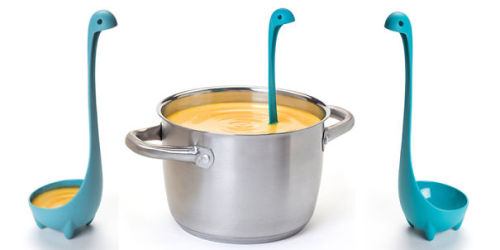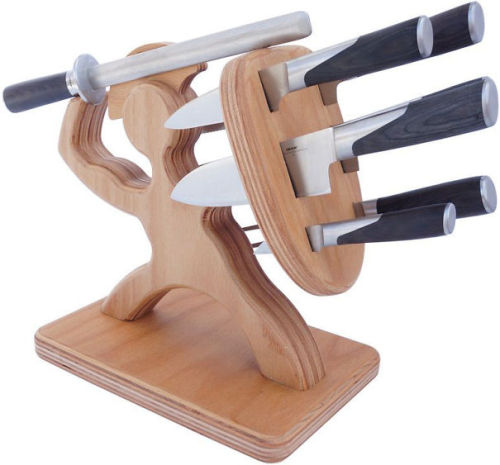Dive into your creative stream
Tools - Blog Posts
I just found a new app for creative wordbuilding/writing stuff and guys it's so amazing it's called Fortelling and I only got it today but it's great
There's so much stuff
Just a quick tip to artists

If you’re an artist who likes to work really close, (like me), do yourself a favor and put up two views. You can do this by clicking View–> New on your toolbar.
There’s nothing worse than finally zooming out and realizing what you were doing was very wrong. This saved me a lot of grief tbh. I’m sure everyone knows this already but ._.;; I arrived quite late to that party.
For someone who struggles to understand sometimes what a given block does inside a specific BHAV, this might be useful!
BHAV to Diagram Tool
I've just released a web tool for The Sims 2 modders that converts SimPe BHAV code to Mermaid diagrams. It's intended to make BHAV functions easier to understand, especially the big ones.
BHAV to Mermaid diagram (cosmatevs.github.io)


Lunch time painting #watercolor #pentel #pentelwaterbrush #waterbrush #windsor&newton #art #painting #tools #toolsofthetrade

One of the tools that was used on the Georgetown Loop Railroad.
From Discovering the Secrets of the Universe to In-Space Servicing, We’ve Got The Tools for the Job
If you need to fix something on Earth, you could go to a store, buy the tools you need, and get started. In space, it’s not that easy.

Aside from the obvious challenges associated with space (like it being cold and there being no gravity), developing the right tools requires a great deal of creativity because every task is different, especially when the tools need to be designed from scratch. From the time an engineer dreams up the right tools to the time they are used in space, it can be quite a process.
On Nov. 15, astronauts Luca Parmitano and Drew Morgan began a series of spacewalks to repair an instrument called the Alpha Magnetic Spectrometer (AMS-2) on the exterior of the International Space Station. The first of four spacewalk focused on using specialized tools to remove shields and covers, to gain access to the heart of AMS to perform the repairs, and install a new cooling system.

The debris shield that covered Alpha Magnetic Spectrometer floats away toward Earth as astronaut Drew Morgan successfully releases it.
Once repaired, AMS will continue to help us understand more about the formation of the universe and search for evidence of dark matter and antimatter.
These spacewalks, or extravehicular activities (EVAs), are the most complex of their kind since the servicing of the Hubble Space Telescope. AMS is particularly challenging to repair not only because of the instrument’s complexity and sensitivity, but also because it was never designed to be fixed. Because of this design, it does not have the kinds of interfaces that make spacewalks easier, or the ability to be operated on with traditional multi-purpose tools. These operations are so complex, their design and planning has taken four years. Let’s take a look at how we got ready to repair AMS.

Thinking Outside of the (Tool) Box
When designing the tools, our engineers need to keep in mind various complications that would not come into play when fixing something on Earth. For example, if you put a screw down while you’re on Earth, gravity will keep it there — in space, you have to consistently make sure each part is secure or it will float away. You also have to add a pressurized space suit with limited dexterity to the equation, which further complicates the tool design.

In addition to regular space complications, the AMS instrument itself presents many challenges — with over 300,000 data channels, it was considered too complex to service and therefore was not designed to one day be repaired or updated if needed. Additionally, astronauts have never before cut and reconnected micro-fluid lines (4 millimeters wide, less than the width of the average pencil) during a spacewalk, which is necessary to repair AMS, so our engineers had to develop the tools for this big first.

With all of this necessary out-of-the-box thinking, who better to go to for help than the teams that worked on the most well-known repair missions — the Hubble servicing missions and the space station tool teams? Building on the legacy of these missions, some of our same engineers that developed tools for the Hubble servicing missions and space station maintenance got to work designing the necessary tools for the AMS repair, some reworked from Hubble, and some from scratch. In total, the teams from Goddard Space Flight Center’s Satellite Servicing Projects Division, Johnson Space Center, and AMS Project Office developed 21 tools for the mission.
Designing and Building
Like many great inventions, it all starts with a sketch. Engineers figure out what steps need to be taken to accomplish the task, and imagine the necessary tools to get the job done.
From there, engineers develop a computer-aided design (CAD) model, and get to building a prototype. Tools will then undergo multiple iterations and testing with the AMS repair team and astronauts to get the design just right, until eventually, they are finalized, ready to undergo vibration and thermal vacuum testing to make sure they can withstand the harsh conditions of launch and use in the space environment.
Hex Head Capture Tool Progression:

Hex Head Capture Tool Used in Space:

Practice Makes Perfect
One of the reasons the AMS spacewalks have been four years in the making is because the complexity of the repairs required the astronauts to take extra time to practice. Over many months, astronauts tasked with performing the spacewalks practiced the AMS repair procedures in numerous ways to make sure they were ready for action. They practiced in:
Virtual reality simulations:

The Neutral Buoyancy Laboratory:

The Active Response Gravity Offload System (ARGOS):

Astronauts use this testing to develop and practice procedures in space-like conditions, but also to figure out what works and doesn’t work, and what changes need to be made. A great example is a part of the repair that involves cutting and reconnecting fluid lines. When astronauts practiced cutting the fluid lines during testing here on Earth, they found it was difficult to identify which was the right one to cut based on sight alone.
The tubes on the AMS essentially look the same.

After discussing the concern with the team monitoring the EVAs, the engineers once again got to work to fix the problem.

And thus, the Tube Cutting Guide tool was born! Necessity is the mother of invention and the team could not have anticipated the astronauts would need such a tool until they actually began practicing. The Tube Cutting Guide provides alignment guides, fiducials and visual access to enable astronauts to differentiate between the tubes. After each of eight tubes is cut, a newly designed protective numbered cap is installed to cover the sharp tubing.

Off to Space

With the tools and repair procedures tested and ready to go, they launched to the International Space Station earlier this year. Now they’re in the middle of the main event -- Luca and Drew completed the first spacewalk last Friday, taking things apart to access the interior of the AMS instrument. Currently, there are three other spacewalks scheduled over the course of a month. The next spacewalk will happen on Nov. 22 and will put the Tube Cutting Guide to use when astronauts reconnect the tubes to a new cooling system.
With the ingenuity of our tool designers and engineers, and our astronauts' vigorous practice, AMS will be in good hands.

Check out the full video for the first spacewalk. Below you can check out each of the tools above in action in space!
Debris Shield Worksite: 2:29:16 – Debris Shield Handling Aid 2:35:25 – Hex Head Capture Tool (first) 2:53:31 – #10 Allen Bit 2:54:59 – Capture Cages 3:16:35 – #10 Allen Bit (diagonal side) 3:20:58 – Socket Head Capture Tool 3:33:35 – Hex Head Capture Tool (last) 3:39:35 – Fastener Capture Block 3:40:55 – Debris Shield removal 3:46:46 – Debris Shield jettison
Handrail Installations: 4:00:53 – Diagonal Beam Handrail Install 4:26:09 – Nadir Vacuum Case Handrail Install 4:33:50 – Zenith Vacuum Case Handrail InstallVertical Support Beam (VSB)
Vertical Support Beam (VSB) Worksite: 5:04:21 – Zip Tie Cutter 5:15:27 – VSB Cover Handling Aid 5:18:05 – #10 Allen Bit 5:24:34 – Socket Head Capture Tool 5:41:54 – VSB Cover breaking 5:45:22 – VSB Cover jettison 5:58:20 – Top Spacer Tool & M4 Allen Bit 6:08:25 – Top Spacer removal 7:42:05 - Astronaut shoutout to the tools team
These 9 Companies Could Help Us Send the Next Robotic Landers to the Moon
We sent the first humans to land on the Moon in 1969. Since then, only of 12 men have stepped foot on the lunar surface – but we left robotic explorers behind to continue gathering science data. And now, we’re preparing to return. Establishing a sustained presence on and near the Moon will help us learn to live off of our home planet and prepare for travel to Mars.

To help establish ourselves on and near the Moon, we are working with a few select American companies. We will buy space on commercial robotic landers, along with other customers, to deliver our payloads to the lunar surface. We’re even developing lunar instruments and tools that will fly on missions as early as 2019!

Through partnerships with American companies, we are leading a flexible and sustainable approach to deep space missions. These early commercial delivery missions will also help inform new space systems we build to send humans to the Moon in the next decade. Involving American companies and stimulating the space market with these new opportunities to send science instruments and new technologies to deep space will be similar to how we use companies like Northrop Grumman and SpaceX to send cargo to the International Space Station now. These selected companies will provide a rocket and cargo space on their robotic landers for us (and others!) to send science and technology to our nearest neighbor.
So who are these companies that will get to ferry science instruments and new technologies to the Moon?
Here’s a digital “catalogue” of the organizations and their spacecraft that will be available for lunar services over the next decade:
Astrobotic Technology, Inc.
Pittsburg, PA

Deep Space Systems
Littleton, CO

Firefly Aerospace, Inc.
Cedar Park, TX

Intuitive Machines, LLC
Houston, TX

Lockheed Martin Space
Littleton, CO

Masten Space Systems, Inc.
Mojave, CA

Moon Express, Inc.
Cape Canaveral, FL

Orbit Beyond, Inc.
Edison, NJ

Draper, Inc.
Cambridge, MA

We are thrilled to be working with these companies to enable us to investigate the Moon in new ways. In order to expand humanity’s presence beyond Earth, we need to return to the Moon before we go to Mars.
The Moon helps us to learn how to live and work on another planetary body while being only three days away from home – instead of several months. The Moon also holds enormous potential for testing new technologies, like prospecting for water ice and turning it into drinking water, oxygen and rocket fuel. Plus, there’s so much science to be done!

The Moon can help us understand the early history of the solar system, how planets migrated to their current formation and much more. Understanding how the Earth-Moon system formed is difficult because those ancient rocks no longer exist here on Earth. They have been recycled by plate tectonics, but the Moon still has rocks that date back to the time of its formation! It’s like traveling to a cosmic time machine!
Join us on this exciting journey as we expand humanity’s presence beyond Earth.
Learn more about the Moon and all the surprises it may hold: https://moon.nasa.gov
Find out more about today’s announcement HERE.
Make sure to follow us on Tumblr for your regular dose of space: http://nasa.tumblr.com







